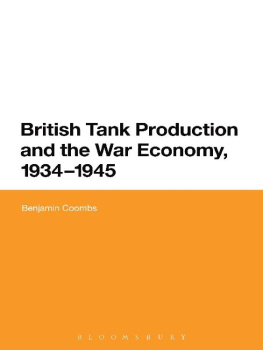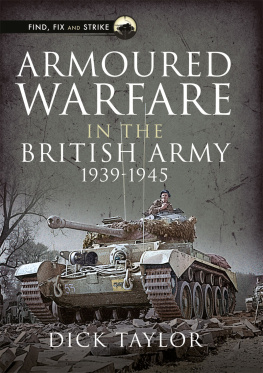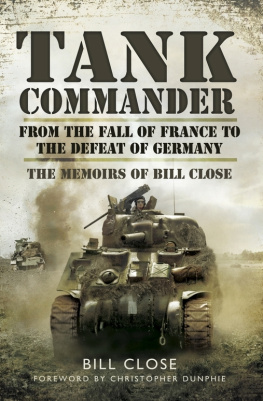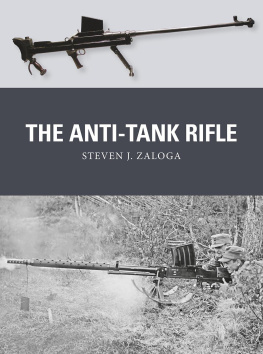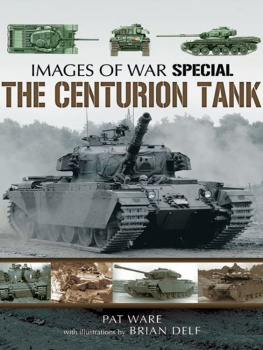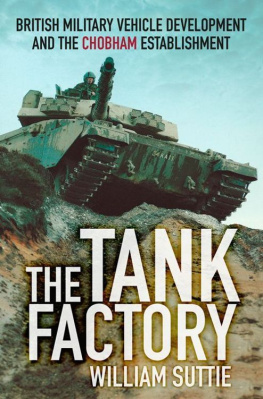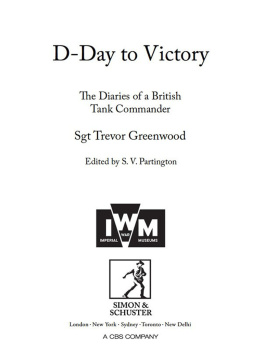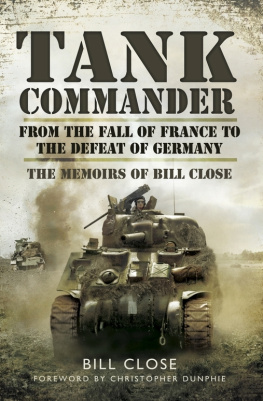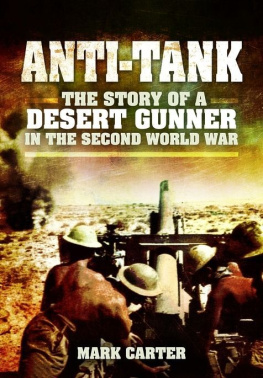British Tank Production and the War Economy, 19341945
Benjamin Coombs

Bloomsbury Academic
An imprint of Bloomsbury Publishing Plc
50 Bedford Square London WC1B 3DP UK
1385 Broadway New York NY 10018 USA
www.bloomsbury.com
First published 2013
Bloomsbury is a registered trade mark of Bloomsbury Publishing Plc
Benjamin Coombs, 2013
All rights reserved. No part of this publication may be reproduced or transmitted in any form or by any means, electronic or mechanical, including photocopying, recording, or any information storage or retrieval system, without prior permission in writing from the publishers.
Benjamin Coombs has asserted his right under the Copyright, Designs and Patents Act, 1988, to be identified as Author of this work.
No responsibility for loss caused to any individual or organization acting on or refraining from action as a result of the material in this publication can be accepted by Bloomsbury Academic or the author.
British Library Cataloguing-in-Publication Data
A catalogue record for this book is available from the British Library.
eISBN: 978-1-4725-1282-6
Library of Congress Cataloguing-in-Publication Data
A catalog record for this book is available from the Library of Congress.
Contents
I would like to thank the following who have helped me in the completion of this book. First and foremost I am indebted to Professor Mark Connelly and Dr Timothy Bowman, for their continued advice and support. Professors David Welch and David Edgerton are thanked for their comments and recommendations during the examination of my original thesis. The University of Kent and Mr Paul Dyer receive my special thanks for awarding me the Alumni and Dyer scholarships. I am also grateful for the Royal Historical Society for providing me with the travel grants towards my research expenses within the United Kingdom and in Canada. I would like to thank the staff at Bloomsbury Publishing, particularly Claire Lipscomb and Rhodri Mogford, for their guidance and assistance.
My thanks go to the assistance provided by the staff at the various archives consulted. First, the National Archives in Kew, the Library and Archives Canada in Ottawa and the National Archives of Australia in Canberra. Secondly, the Bodleian Library in Oxford, the Cambridge University Library, the Liddell Hart Centre for Military Archives at Kings College London, the Churchill College Archives in Cambridge, the Nuffield College Library in Oxford, the Modern Records Centre at the University of Warwick and the Museum of English Rural Life at the University of Reading. Thirdly, the Birmingham Archives and Heritage Service in the Birmingham Central Library, the Gloucestershire Archives in Gloucester and the Staffordshire Record Office in Stafford. Finally, the British Commercial Vehicle Museum in Leyland and the Heritage Motor Centre Motor Museum in Gaydon. Notwithstanding this help, any errors of fact or interpretation remain my responsibility.
A final word of thanks goes to my parents for their unfailing support and encouragement towards my continuing studies.
| AEC | Associated Equipment Company |
| AFV | Armoured Fighting Vehicles |
| ARP | Air Raid Precautions |
| BAH | Birmingham Archives and Heritage |
| BAS | British Army Staff |
| BCVM | British Commercial Vehicle Museum |
| BLO | Bodleian Library, Oxford |
| BPC | British Purchasing Commission |
| BSM | British Supply Mission |
| CAFV | Chairman, Armoured Fighting Vehicles |
| CCA | Churchill College Archives |
| CGMP | Controller-General of Munitions Production |
| CMH | Canadian Military Headquarters |
| CUL | Cambridge University Library |
| DAFV | Director of Armoured Fighting Vehicles |
| DCIGS | Deputy Chief of the Imperial General Staff |
| DD | Duplex Drive |
| DDGOF | Deputy Director-General of Ordnance Factories |
| DGAFV | Director-General of Armoured Fighting Vehicles |
| DGAR | Director-General of Army Requirements |
| DGFVP | Director-General of Fighting Vehicles Production |
| DGMP | Director-General of Munitions Production |
| DGP | Director-General of Programmes |
| DGTT | Director-General of Tanks and Transport |
| DND | Department of National Defence |
| GAG | Gloucestershire Archives, Gloucester |
| GMC | General Motors Corporation |
| HMC | Heritage Motor Centre |
| HMSO | His/Her Majestys Stationery Office |
| hp | Horsepower |
| LAC | Library and Archives Canada |
| MOA | Mass Observation Archive |
| MP | Member of Parliament |
| MRC | Modern Records Centre |
| NAA | National Archives of Australia |
| NCL | Nuffield College Library |
| SP | Self-Propelled |
| SRO | Staffordshire Record Office |
| TNA | The National Archives |
The official history of British War Production for the Second World War accurately describes tank production as a highly-specialised industrial art without parallel in peace-time industry and without any special affinity with any branch of civilian engineering. The introduction of the tank during the First World War meant that the government and military authorities had to decide upon the tactical requirements for this new weapon and the numbers to be produced. As a result, industry had to overcome the issues of design, development and production to meet these objectives. The interaction between the government, the military and industry for the emerging tank programme almost one hundred years ago remains just as important today. These issues include tank designs that aim to find the required balance between firepower and overall size, armour protection and gross weight, and speed and manoeuvrability. The tactical and operational requirements of the General Staff when attempting to achieve this balance must fully understand the realistic capabilities of industry. Tanks will never be invulnerable to all forms of attack, so the enemy is always at liberty to test and exploit any weaknesses. The fighting compartment must be designed to permit tank crews to operate at peak efficiency in terms of battlefield performance and endurance. The number of tanks made available need to be sufficient for operations to have a reasonable chance of success. The issue of mechanical reliability is paramount if the tanks are to perform the different roles assigned to them. The availability of spare parts is essential to maintain the vehicles in the field during operations or behind the lines in base workshops. Finally, tanks have the potential to both strike fear into the enemy and provide inspiration and enhance the morale of friendly troops. These different issues will be discussed in this book from rearmament until the end of the Second World War, as part of an examination of British tank production and the war economy as a whole.
While the subject of armoured warfare has received continued interest by historians, a scholarly analysis of the British tank industry for the period before and during the Second World War has so far received insufficient attention. In 1960, Richard Ogorkiewicz provided a detailed study of the development and use of armour, although the available archival material has since greatly expanded.
Next page
